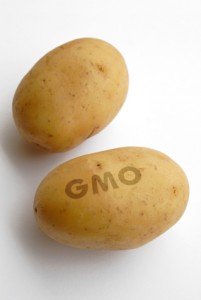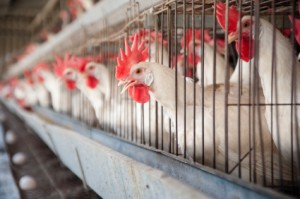Guest blog post from Lynn Blevins, Clinical Assistant Professor of Medicine at the University of Vermont. Lynn is trained as a field epidemiologist through the Centers for Disease Control and Prevention’s (CDC) Epidemic Intelligence Service (EIS). She worked at CDC both in Atlanta and as an assignee to the Vermont Department of Health in the areas of Immunizations, Infectious Disease, Environmental Health and Emergency Preparedness. At UVM, she is both faculty at the College of Medicine and staff at UVM Extension’s Center for Sustainable Agriculture where her work focuses on on-farm produce safety.
Recently Vermont Law School’s new Center for Agriculture and Food Systems hosted local and national experts on legal and policy issues related to agriculture at their Conference on Agriculture and Food Systems.
The 16 speakers and 5 panelists challenged us to consider topics of critical importance to sustainable agriculture including water quality, public health, genetically modified organisms, animal agriculture, federal farm policy, and agriculture in Vermont.
I’ve boiled down my 15 pages of notes to yield one common theme. Existing policy limits our ability to make changes in the food system towards sustainability.
Water Pollution
 The Clean Water Act has successfully controlled point-source water pollution, but there is a non-point source exemption for agriculture. States have largely been reluctant to regulate, resulting in agriculture, abandoned mines, and suburban development as the last great unregulated sources of water pollution in the United States.
The Clean Water Act has successfully controlled point-source water pollution, but there is a non-point source exemption for agriculture. States have largely been reluctant to regulate, resulting in agriculture, abandoned mines, and suburban development as the last great unregulated sources of water pollution in the United States.
Public Health
Regulatory agencies (mainly FDA) regard products as safe unless proven not to be safe. In other words, instead of being guided by the precautionary principle, which would require scientific inquiry to determine safety before use, safety is assumed until proven otherwise. Such is the case for ~80,000 chemicals on the market not tested for safety and the lack of standards for many substances, including arsenic, which is known to cause cancer, in foods.
Genetically Engineered Crops
 The regulation (or lack thereof) of genetically engineered (GE) foods is a prime example of regulations not meeting needs of the general public (the eaters). As biotechnology advanced in the 1980s, regulations for GE foods were pieced together from unrelated existing regulations (that’s right, no new regulations for GE crops). It gets complicated, but in short the following agencies are involved:
The regulation (or lack thereof) of genetically engineered (GE) foods is a prime example of regulations not meeting needs of the general public (the eaters). As biotechnology advanced in the 1980s, regulations for GE foods were pieced together from unrelated existing regulations (that’s right, no new regulations for GE crops). It gets complicated, but in short the following agencies are involved:
EPA – Regulates crops with an inserted gene from the bacteria Bacillus thuringiensis because the gene produces a toxin that acts as a pesticide (EPA regulates pesticides). EPA has imposed some planting restrictions.
FDA – Regulates food safety and has the power to regulate the labeling of GE foods, but is sticking to their opinion that no labeling is required because there is “no material difference” between GE food and non-GE foods. I would argue otherwise – that there is a material difference – an inserted gene and perhaps even a toxin. This seems so obvious, but again, it is being considered safe unless proven to not be safe.
USDA – GE crops are regulated under the Plant Protection Act, which concerns itself with plant pests and noxious weeds. However, GE plants are considered similar to their conventional counterparts (the fact that they are GE is not considered), which results in deregulation without Environmental Impact Statements and unlimited planting without monitoring (except, for private industry, which chooses to monitor quite closely to protect their patent rights). If you think you’ve read that incorrectly because it doesn’t make any logical sense, let me assure you that you have not. These plants are not being evaluated on characteristics related to GE, such as the increased herbicide use that accompanies GE crops, weeds’ resistance to the herbicide glyphosate, and the genetic contamination of organic and wild crops.
Grower agreements for GE seeds shift liability to farmers, thus preventing the organic community from going after the biotech company when crops are contaminated. In fact, the opposite is true – biotech companies go after organic growers when the organic crops are contaminated on the basis of patent infringement. Again, if you think you’ve mis-read that because it isn’t logical, let me assure you that you understood it correctly. The organic community has tried, without success, to use the judicial branch of government to prevent biotech companies from claiming patent infringement when unwanted GE pollen contaminates their fields. Legislative attempts at the state level, including here in VT, have not been successful due to law suit threats from biotech companies. Now we see California will take a different approach by bringing the question of labeling directly to the people through a ballot initiative.
One speaker referred to the regulation of GE crops as “The Grand Contortion” and “legal fiction that worked”. The lack of effective regulations around GE crops has resulted in the biotech companies essentially regulating themselves, gaining the upper hand over those who grow organic food and those who claim the right to know what is in their food through labeling, and causing yet-to-be fully determined environmental effects.
Animal Agriculture
 There are no federal regulations on the treatment of farm animals, although they account for 98% of the animals humans interact with (by comparison, there are greater protections for domestic pets, circus animals, and zoo animals). State anti-cruelty laws apply to farm animals, but are often ineffectively applied. Ironically, the anti-cruelty laws were created for farm animals, but they currently benefit the least from those laws.
There are no federal regulations on the treatment of farm animals, although they account for 98% of the animals humans interact with (by comparison, there are greater protections for domestic pets, circus animals, and zoo animals). State anti-cruelty laws apply to farm animals, but are often ineffectively applied. Ironically, the anti-cruelty laws were created for farm animals, but they currently benefit the least from those laws.
The “Common Farming Exemption” exempts practices that might seem cruel to the average person as long as it is common. This provides the food animal production industry the power to determine what is cruel. Let me just say that most of us learned in kindergarten that two wrongs don’t make a right. Can’t we live by those rules?
Regulation of farm animals welfare in the US pales in comparison to that the EU, perhaps because we are uncomfortable talking about how our industrial food animals are raised or because we don’t see what goes on behind the concrete walls of a Confined Animal Feeding Operation (CAFO). Areas which need our attention include lack of space, procedures performed without anesthesia, an inability to carry out natural instincts, and overbreeding resulting in abnormal and uncomfortable body confirmation. If we, the public, cannot talk about this, how will it be regulated or voted on by ballot initiative?
The argument is often made that a sustainable animal agriculture system cannot produce the same amount of meat as the industrial system. Might one (healthy) solution be to eat less meat, and when we do to channel our food dollar to ethical and sustainable productions?
Federal Policy
 No agricultural policy conference would be complete without a discussion of the farm bill. Sticking with the (my) theme of the conference of policy limiting change, we now have a Farm Bill that has expired without a new farm bill to replace it. The Senate successful passed a bill with many reforms including replacing direct payments with crop insurance, and more investment into organics, local foods, and fruits and vegetables (referred to as “specialty crops” because they are not a commodity crop like corn, wheat, rice, soybean, or cotton). While the Senate version had many improvements over prior Farm Bills, the House version was less sympathetic to sustainable agriculture systems. Congress was unable to pass a Farm Bill prior to the conclusion of the last session.
No agricultural policy conference would be complete without a discussion of the farm bill. Sticking with the (my) theme of the conference of policy limiting change, we now have a Farm Bill that has expired without a new farm bill to replace it. The Senate successful passed a bill with many reforms including replacing direct payments with crop insurance, and more investment into organics, local foods, and fruits and vegetables (referred to as “specialty crops” because they are not a commodity crop like corn, wheat, rice, soybean, or cotton). While the Senate version had many improvements over prior Farm Bills, the House version was less sympathetic to sustainable agriculture systems. Congress was unable to pass a Farm Bill prior to the conclusion of the last session.
I came away from the conference disappointed, yet hopeful. Disappointed – that the existing policies do not meet our needs for a healthy food system. Hopeful – that it will improve through meaningful legislation and, when that’s not possible, ballot initiatives.










